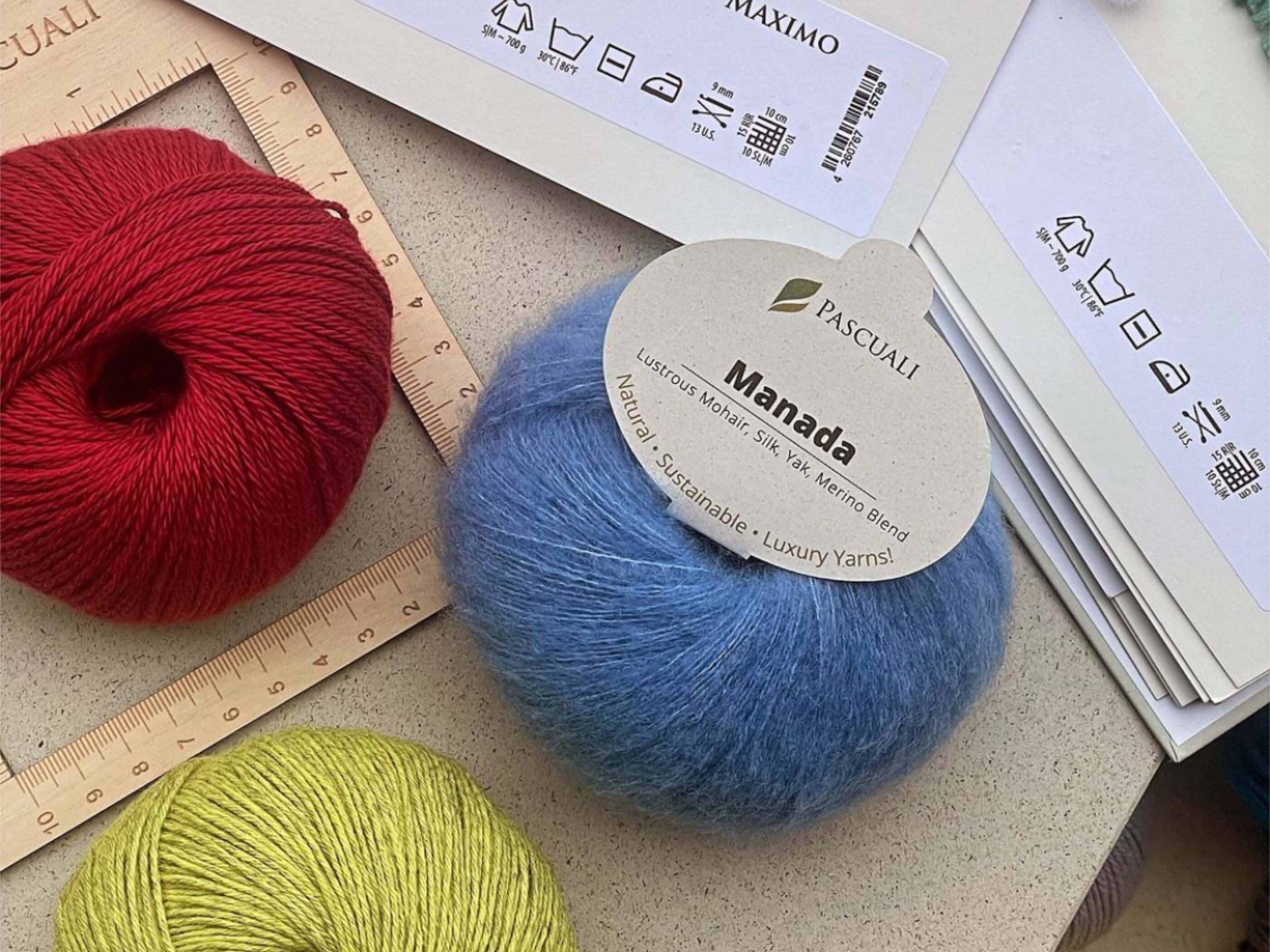By Claudia Ostrop
Our newest yarn is very special: Manada, a mohair yarn.
You might ask yourself why? One closer look at its composition and what makes is so unique will become clear. It consists of 45 percent Superkid mohair and 25 percent silk. What makes it really different to the classic mohair-silk blends is that is has 15 percent merino and 15 percent yak wool.
You can read more about the composition and origin of the individual fibres here

Manada comes in 25 g balls with a length of 215 yds (200 meters). This makes it a bit stronger than some classic mohair-silk blends.
If you look at it closely, it is relatively strong for a mohair yarn. Due to the twisting of the four different fibres, it looks very fluffy and frizzy. The halo surrounding it is rather short. It does not have the long, individual “fluff” that often dances around the core strand of a “normal” mohair yarn. Manada is much more compact in this regard.
So how does Manada (that's the Spanish word for herd of animals, by the way!) feel when knitting with it? A look at the label shows that the yarn can be knitted with very thin (2 US /2.5 mm) to rather thick (6 US /4 mm) needles. With 20 sts, sometimes even less, you can knit a swatch sample of 4” x 4”. Exciting, isn't it?
Manada slides easily through the fingers and on to the needles. In the first row after the cast on, you have to pay closer attention because the yarn is so fine. But once the desired gauge of the individual stitches has set in the second row or round, knitting is easy. Despite the halo, the yarn glides nicely and evenly.
If Manada is knitted with very thin needles, the result is a very fine, even stitch structure. The dense fabric makes the knitted piece look almost as if it has been brushed or felted (in a positive sense).

Knitted with thicker needles results in a completely different look. Since the core yarn is very thin, the knitted fabric is of course very loose. But the fleece holds the stitches together so that the knitted piece doesn't look open or full of holes.
Recommending “the” best needle size is not easy. With Manada, more than with other yarns, that depends entirely on what kind of optical effect you want to achieve. Larger needle sizes are definitely recommended for lace, so that the pattern blooms.
In short, Manada always looks very beautiful when knitted with thin as well as with thick needles.
An advantage of the compact and not so long mohair halo is, by the way, that Manada can be ribbed relatively well, should you ever have to do this!
When blocking (there is a lot of information about caring for wool in our blog post, in which we devote ourselves entirely to wool care), Manada blossoms and the halo becomes a little fuller.
When knitted with a thick needle the results are fantastic. The knitted fabric is airy and loose, but still not too thin and "open". This is perfect for light summer cardigans or boleros, for example. But an oversized pullover would also be great - after all, it would be incredibly light. Perhaps you are looking to knit something very colourful? Manada's colourway offers countess possibilities! Whether a large triangular shawl, or a beautiful stole? One can only dream of the possibilities ...
Manada is also perfect as a pairing yarn. Read more on this in our blog where we tell you about our results when knitting Manada with many other yarns in our range.





